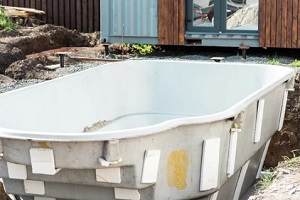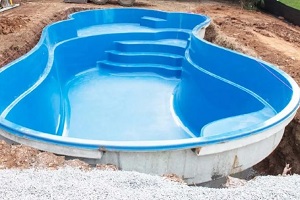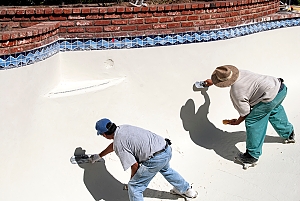 If you are preparing to have an inground pool installed, it is important to understand the installation process. At first glance, it may appear overwhelming as it is complex and time-consuming, but a reputable pool company will be able to navigate the process with great skill and the end result will be a beautiful and enjoyable addition to your home.
If you are preparing to have an inground pool installed, it is important to understand the installation process. At first glance, it may appear overwhelming as it is complex and time-consuming, but a reputable pool company will be able to navigate the process with great skill and the end result will be a beautiful and enjoyable addition to your home.
This blog will walk you through the phases and steps involved in the inground pool installation process.
Pool Construction Site Preparation
The site preparation phase is one of the most important phases in the inground pool installation process as it ensures the pool is structurally sound and functional. Here are the key steps involved in pool construction site preparation:
- Choose the right location: The first step is to choose the right location for your pool. Consider factors such as sunlight exposure, proximity to the house, and accessibility. It’s also important to consider any local zoning laws or regulations that may impact pool placement such as for drainage.
- Excavate the site: Once you have chosen the location, the next step is to excavate the site. This involves removing a large portion of the surface area and digging down and around for the specifications of the pool. The installer will need to check the soil composition to ensure it can support the weight of the pool. If the soil is too soft or unstable, additional support may be required.
- Level the ground: After the excavation is complete, the ground must then be leveled. This involves using a laser level to ensure that upon completion, the water is distributed evenly throughout the pool.
- Install any necessary drainage: Proper drainage will prevent water from collecting around the pool area. The installer may need to install additional drainage systems or modify the existing drainage to ensure water flows away from the pool in the event of an overfill/overflow.
- Create access points: Finally, the installer will need to create access points for the pool equipment. This includes installing the pipes, electrical lines, and any other components necessary for the pool to function properly.
Installing the Pool Shell
 Once the site is prepared, the installer will move on to installing the pool shell. This involves laying the foundation, installing the steel framework, placing the plumbing and electrical lines, and pouring the concrete or installing the vinyl liner. This phase requires precision and attention to detail to ensure the pool shell is secure and level.
Once the site is prepared, the installer will move on to installing the pool shell. This involves laying the foundation, installing the steel framework, placing the plumbing and electrical lines, and pouring the concrete or installing the vinyl liner. This phase requires precision and attention to detail to ensure the pool shell is secure and level.
Backfilling
After the pool shell is installed, it’s time to backfill around the shell. This involves filling in the gap between the pool shell and the excavated site with soil, sand or gravel. This step should be done carefully as this portion will not only provide additional support for the pool shell but also becomes the foundation for decking that will surround the pool.
Install Pool Coping and Decking
The installer will need to choose the right material, measure and cut the coping, install it using mortar or adhesive, and prepare and install the decking area. Decking material is typically a concrete patio or surrounding sidewalk or a combination of the two. Slip-resistant surfaces may also need to be considered as a safety feature.
Overall, pool coping and decking provide both a finished look and a functional space for poolside activities. Working with a professional installer with experience in pool coping and decking is important to ensure a safe and functional pool area.
Install Pool Equipment
After the coping and decking are installed, the installer will move on to installing the ground level pool equipment. This includes the filter, pump, and other components that help to keep the water clean and properly circulated. The installer will also install any necessary safety features such as fencing or pool covers.
Testing Installed Inground Pool
Once the pool is fully installed, the installer will test the pool to ensure it’s functioning properly. This includes checking for leaks and water flow, as well as adding chemicals to balance the water.
Pool Maintenance and Care
 After the pool is installed, it is important to properly maintain and care for it. This includes regular cleaning and maintenance, both opening and winterizing the pool, and protecting it from damage. It is also important to follow proper safety guidelines to ensure the pool is used responsibly and enjoyed by everyone.
After the pool is installed, it is important to properly maintain and care for it. This includes regular cleaning and maintenance, both opening and winterizing the pool, and protecting it from damage. It is also important to follow proper safety guidelines to ensure the pool is used responsibly and enjoyed by everyone.
Reach Out to the Pool Installation Professionals
The inground pool installation process is complex and time-consuming, but working with a professional installer will help the end result be worth it. If you are considering installing an inground pool in the Delaware, Maryland or Northern Virginia area, it is important to hire a professional installer with experience in the installation process.
Masten Pools will properly install your pool for you and provide guidance on how to maintain and care for it. Contact a pool installation professional at Masten Pools today to get started on your dream backyard oasis.
